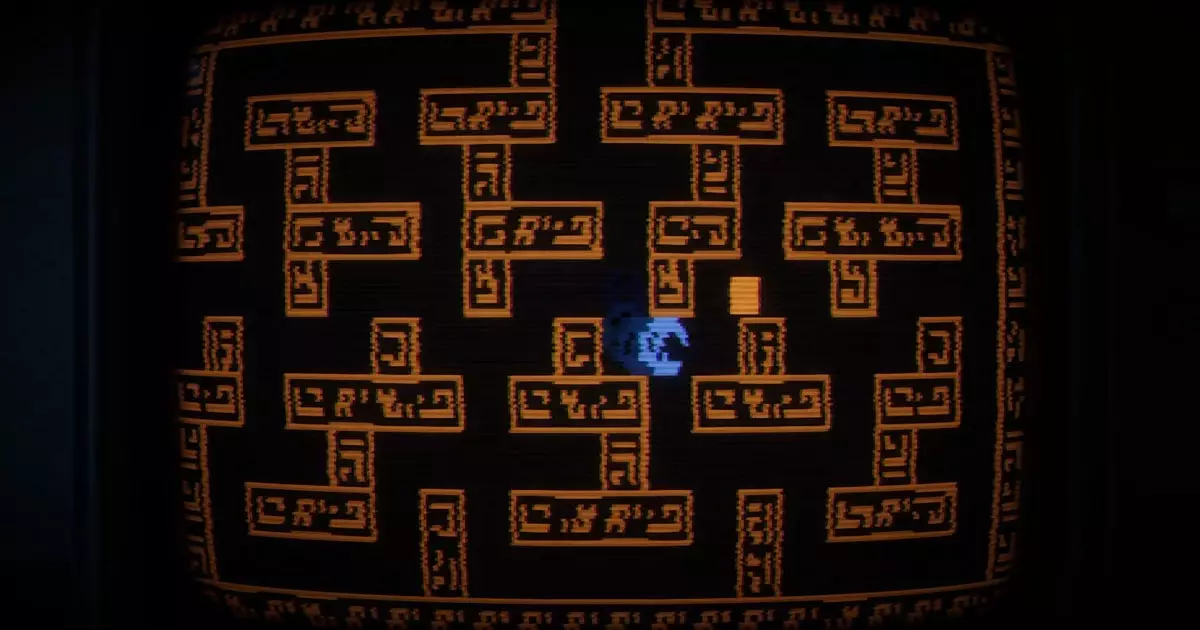The realm of video games frequently immerses players in experiences that evoke nostalgia, particularly those inspired by the vintage aesthetic and innovative mechanics of the early gaming eras. One such title making waves is **Tormenture**, a horror game infused with the spirit of bygone classics like *Inscryption* and *Pony Island*. Set against the backdrop of the 1980s, a decade that encapsulates a unique blend of charm and eeriness, Tormenture invites gamers to step into the shoes of a child navigating a perilous 8-bit universe allegedly haunted by malevolent spirits. This premise not only harks back to a nostalgic period but also sets the stage for an intriguing exploration of fear intertwined with childhood innocence.
At its core, Tormenture utilizes a dual-layered approach to gameplay, oscillating between an intricately designed 8-bit game world and the real-life environment of a seemingly ordinary bedroom filled with sinister toys. This juxtaposition adds depth to the experience; players are not merely traversing levels but are also confronted with the unsettling realities of their surroundings. The game creatively harnesses the essence of a child’s fears, with charming yet eerie elements—think classic toys like the rolling phone with eyes that can suddenly seem menacing to an imaginative young mind.
Upon playing the demo, it becomes evident that Tormenture is not simply a retro-inspired graphic with minimal substance. Instead, it boasts a rich, open-ended gameplay system filled with puzzles, labyrinths, and lurking dangers. The elaborate design is a stark contrast to the simplistic nature of earlier gaming experiences, showcasing modern capabilities while remaining faithful to its vintage inspirations. Early puzzle scenarios introduce players to challenges where ingenuity is required—encounters with zombie hands and traps serve to enhance the feeling of tension and unpredictability.
The visual experience of Tormenture represents a fascinating clash of eras—while the game features lush 3D elements that create an immersive environment, its 8-bit sections provide a nostalgic nod to the limitations of earlier gaming technologies. Unfortunately, not every player may have the luxury of an optimal gaming setup to fully appreciate this dynamic; for instance, experiencing a game at a sluggish 10 fps can lead to frustrating limitations. This disparity highlights the necessity for accessible hardware to complement such innovative designs and experiences.
It raises an essential question: how can developers ensure that their games remain playable and enjoyable across varying hardware specifications? The reality, as noted, is that not every player has access to high-end gaming systems or handheld consoles, which can hinder the experience of a game designed to enthrall its audience.
One of the most defining aspects of Tormenture lies in its atmospheric design. The ghostly undertones, coupled with artful references to nostalgic memorabilia, craft an environment that is both inviting and unsettling. Such a cleverly curated aesthetic keeps the players engaged while invoking a sense of dread—an essential ingredient for any horror-themed experience. The mention of darkness as a foundational element presents a compelling argument for the return to the cavernous, shadowy graphics reminiscent of older video games. Enhancing emotional engagement through environmental design is a refreshing trend often overlooked in contemporary gaming.
Tormenture stands as a testament to the ingenuity and creativity thriving in the indie gaming sector. The blend of 8-bit nostalgia with modern horror elements presents a refreshing take on genre conventions. While the game may not reach the sheer unpredictability of its predecessors like Inscryption, its intriguing premise and immersive design signal a promising direction in horror gaming. As players dive into Tormenture, they may find it not just a game, but a journey back into their childhood fears, carefully wrapped in a vibrant, though haunting, package. Whether it will transform into a cult favorite remains to be seen, but the game’s existing impression lays the groundwork for excitement and anticipation in this evolving landscape.

